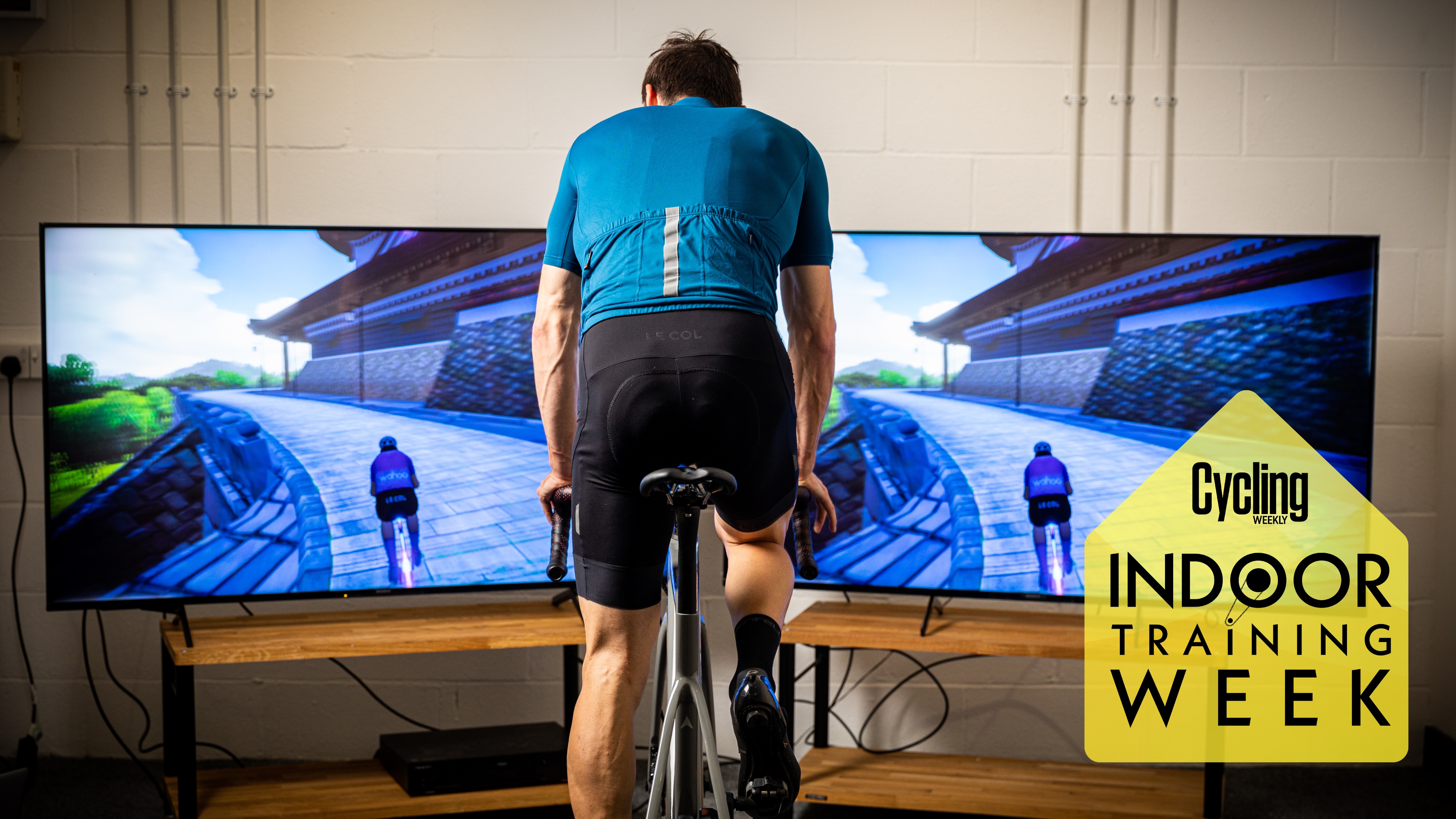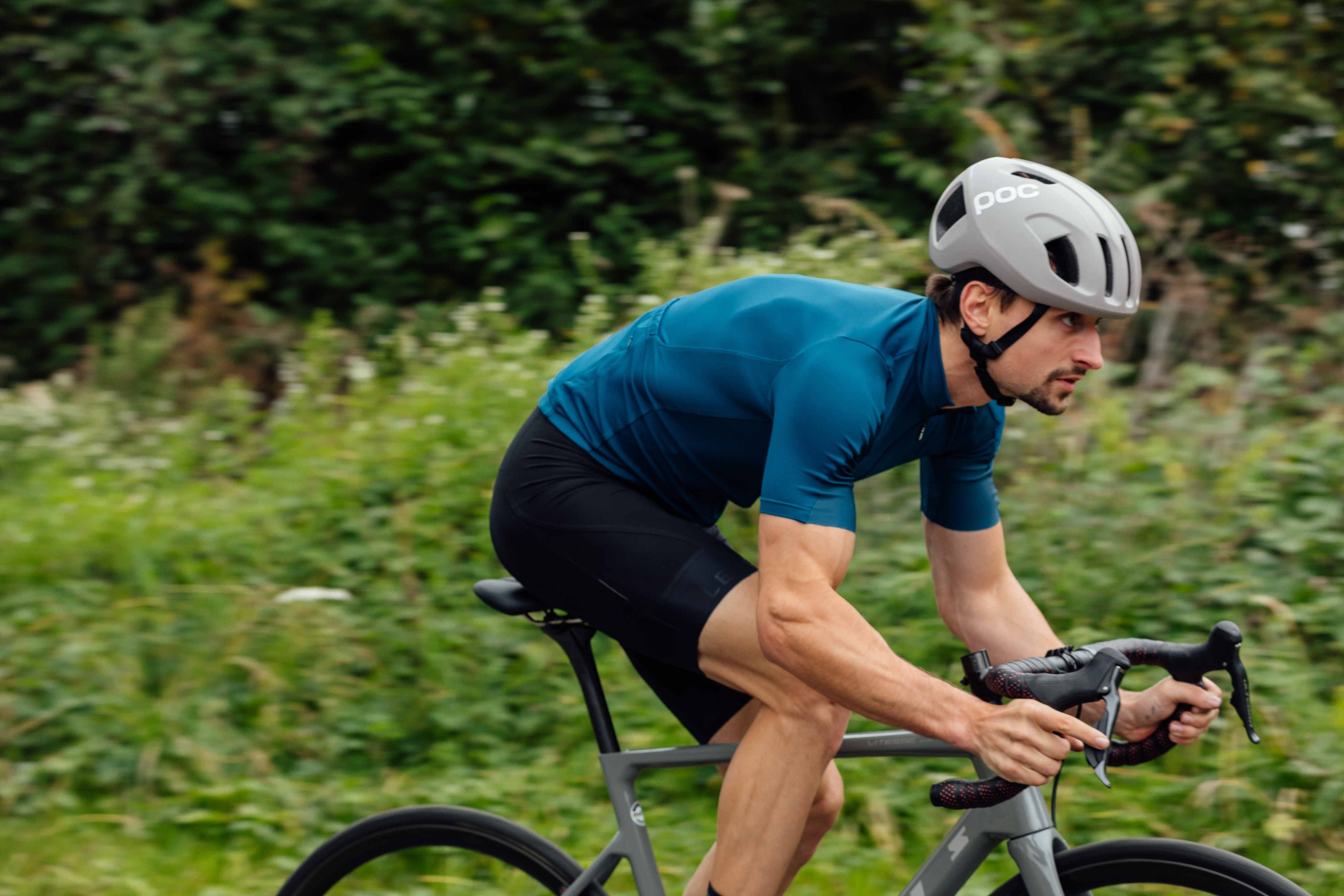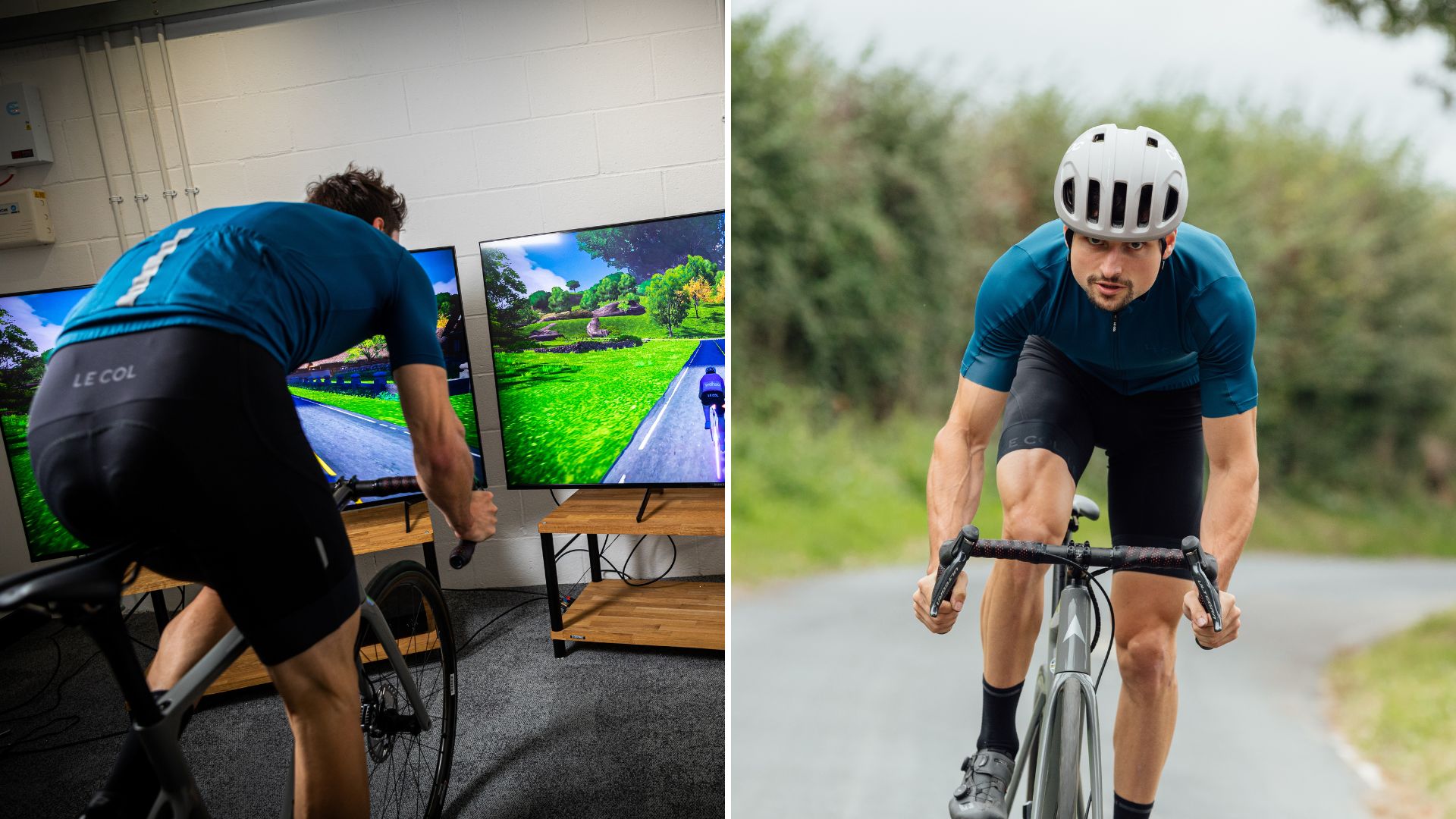Riding climbs indoors isn't the same as scaling a mountain - here's how to ensure your hard work pays off outside
Grinding up virtual climbs may not carry the same physiological benefits as scaling mountains, but the differences can be overcome - cycling coach Andy Turner explains


With a lot of riders now opting for training indoors when the weather gets wet, cold, windy and otherwise wintery, it may be easy to think that all those hours of training on the turbo will directly translate to performance out on the road. A lot of it does, but there are a few outdoor aspects that are very hard to replicate indoors. The big one, and one which a lot of us want to get better at, is climbing.
The problem with climbing indoors vs outdoors is that several elements can be very easily lost when migrating onto the turbo.
When climbing outdoors we experience a change of posture and pull of gravity relative to our position on the bike as the gradient ramps up. In addition to this, we experience lower inertia on the rear wheel which can have an impact on climbing speed, depending on pedalling smoothness.
We also lose an element of balance when the inertia reduces so we have to rely on more activity from our stabiliser muscles when cycling outdoors, especially on steep climbs. So what are some of the ways that we can compensate for these differences to make sure our hard work indoors pays off outside?
Changes in gradient aren't the same indoors

The first issue to look at with riding indoors vs outdoors, is the physical change in gradient, conveniently, a topic as part of my studies. For this I used a Wahoo KICKR Climb - which pitches the front of the bike upwards to re-create outdoor riding - to simulate the gradients, while power was held at a consistent submaximal output to avoid changes in muscle activity due to fatigue, but using a high enough intensity to be representative of climbing effort levels. With Electromyography (EMG) sensors across most of the main muscles in the leg, there were a few observable and statistically significant differences in muscle activity at different gradients.
Most notable was an increase in activity in the gluteus maximus and bicep femoris (hamstring), and decrease in the vastus lateralis (quad) with observable changes in other muscles too. The main finding and conclusion was that for those looking to perform on climbs as part of their goals or events, there is benefit to training on those gradients both virtually and in reality. The reason being that as we go up gradients beyond 7% (typical European mountain road) we change our position on the bike, hip angle, and direction of force application with gravity having a different direction of force application relative to the rider. All of these impact the way in which we pedal and our muscles fire, and not training in those scenarios can impact peak performance on climbs or accelerate the onset of fatigue.
Fortunately, there are now a host more gradient simulators available, or for a little cheap tip, set something under your front wheel to bring the gradient up. But be sure it’s stable and your trainer is compatible with moving the bike around the rear axle.
The latest race content, interviews, features, reviews and expert buying guides, direct to your inbox!
The effect of inertia

The next element is the change in inertia at the back of the bike. It’s very easy to reduce speed from a lower speed, in part because the inertia of the rear wheel is lower, and therefore requires less force to decelerate. So in theory, as long as we keep pedalling the rear wheel should not slow down. However, as we climb there are a few additional forces at play and some inadequacies in how we pedal can exacerbate these.
When we pedal, we don’t often apply force evenly through the pedal stroke. This isn’t normally perceivable when travelling at speeds, as the inertia of the wheel keeps it rolling at a relatively similar speed. But as we are going slower, small changes in our pedal stroke can be exaggerated due to gravity acting as a powerful force that slows us down faster on gradients. So working on a smoother pedal stroke is the way around this. However, with indoor training, a lot of the time we tend to ride in ERG or Level mode [where resistance is automatically increased if cadence slows down] where we have an artificially high inertia at the flywheel of the trainer. This in turn can lead to a slightly lazy pedal stroke, and also a bit of a shock to the system when we go from virtual high inertia climbing, to real-world low inertia.
How do we combat this? What I recommend to the riders I coach is that they do specific efforts with low inertia climbing. To do this, there are a few options. Firstly, using ERG mode, ensure you are in the little chainring and big sprocket as you can still put out whatever power is required due to smart trainers adjusting resistance accordingly. This way you experience the low inertia effect. The second is to use 100% trainer difficulty and do something like Alpe d’Zwift to get the more realistic effect of climbing. During the efforts you can then focus on a smoother pedal stroke as you will feel the resistance changing if you don’t. This should in turn assist with performance on real-world climbs.
The balancing act

Another element linked to inertia is balance. A bike is a clever thing, as the wheels turning act as a gyroscope to keep the bike stable and level. There are some fun demonstrations of this using a wheel and piece of string. A fast turning wheel wants to move forwards in a straight line, but reduce that speed and inertia, and the gyroscopic effect is lessened. This impacts us on climbs where we’re going slower, and quite often it requires a little more balance to keep upright. We then experience more engagement and work required from our stabiliser muscles around the trunk, core, back and shoulders. If these fatigue we can lose form on the bike and impair pedalling efficiency and economy.
Although when cycling outdoors uphill we work these muscles, indoors on the turbo we tend to lose this mostly due to being locked in place. There are inventions in cycling designed to combat this, but in my experience, wobble boards and flexy turbos don’t really replicate the challenges of riding outside.
For those who ride mostly indoors in the winter, the only solution is doing more off-the-bike work and strength and conditioning to get our bodies ready to deal with the demands of cycling up hills.
This is also important, because a lot of these stabiliser muscles around the core also contribute to our respiratory muscle function. When these muscles get fatigued, blood flow is diverted away from the working muscles and towards the respiratory muscles instead. This process preserves our capacity to breathe and meet oxygen demands, and is called the respiratory metaboreflex. Whilst the process ensures we can keep breathing well, but increases the rate of fatigue in our leg muscles. So ensuring our stabiliser muscles are strong and fatigue resistant can actually help with more general fatigue resistance and time to exhaustion.
Both have their place

The bottom line? Training indoors provides you with a space in which you can push hard, without distractions, and at a time that’s convenient to you (without getting wet, at least from the rain). What it can’t do is provide the exact same experience as an outdoor ride, with slightly different muscles being used, a lesser stimulus for perfecting pedal stroke, and the obvious lack of a requirement to balance. However, all of this can be overcome, with a little science - and of course - making sure you get outside, too.
Andy is a Sport & Exercise Scientist, fully qualified and experienced Cycling Coach, Sports Director, Freelance Writer, and Performance Consultant. He spent 3 years riding for a UCI cycling team and 7 years as a BC Elite rider, competing in prestigious events such as the Tour of Britain and the Volta a Portugal.
Graduating with a first-class honours degree in Sport & Exercise Sciences, he continues to pursue his interest in research in the field of Sport Science alongside managing his coaching business, ATP Performance. He also works as a Wind Tunnel operator and Performance Consultant at the Silverstone Sports Engineering Hub, working with individuals, teams, and businesses to optimise performance and develop products.
